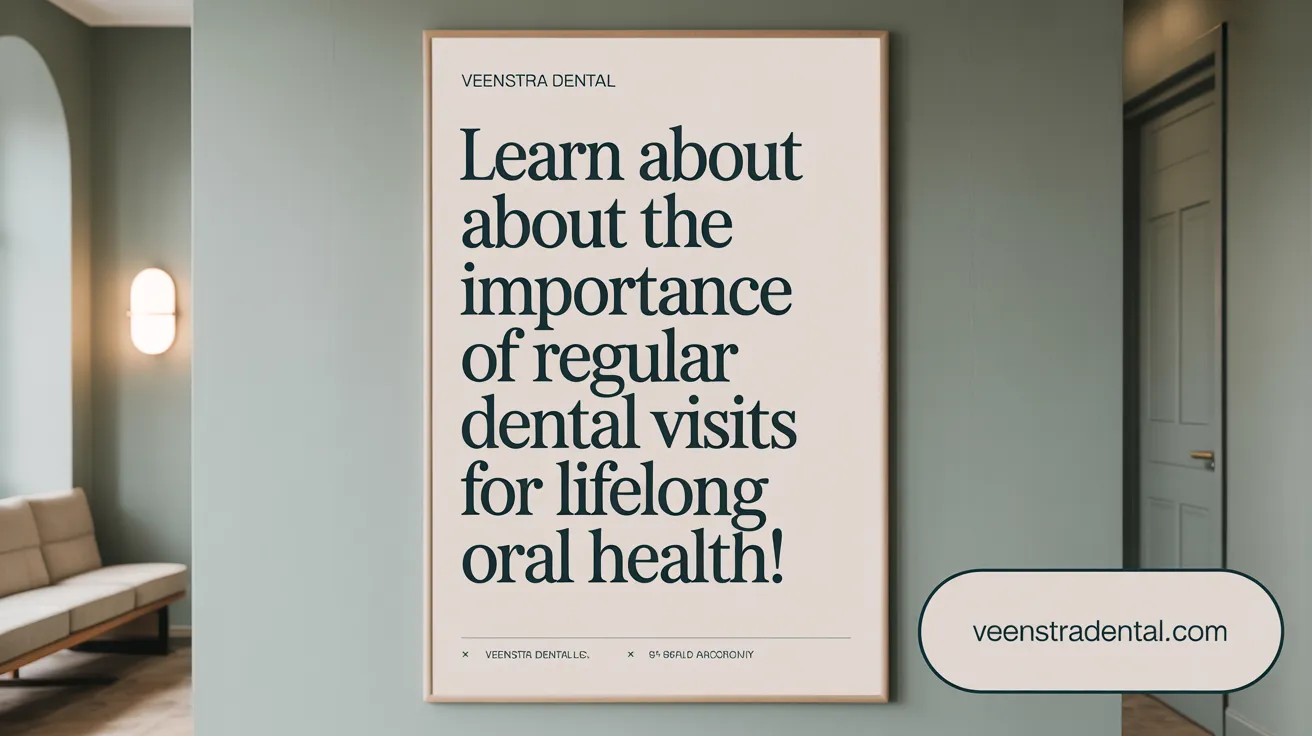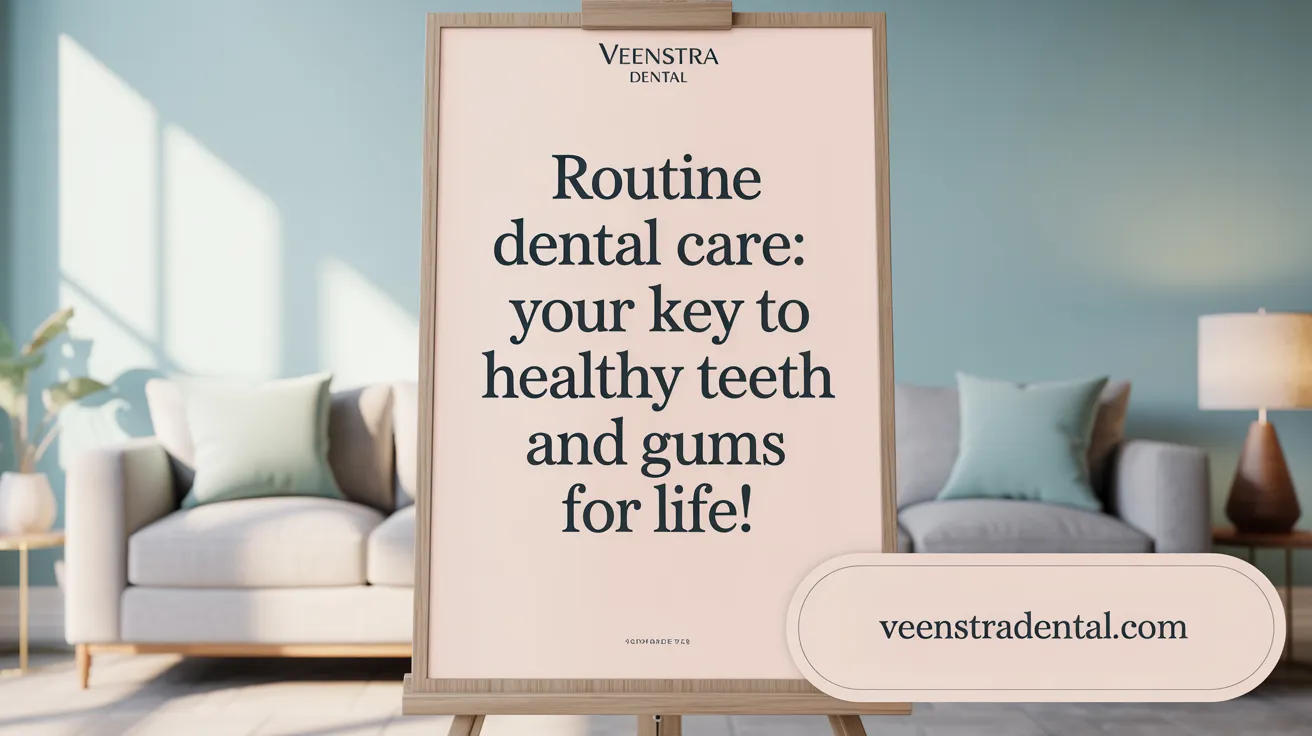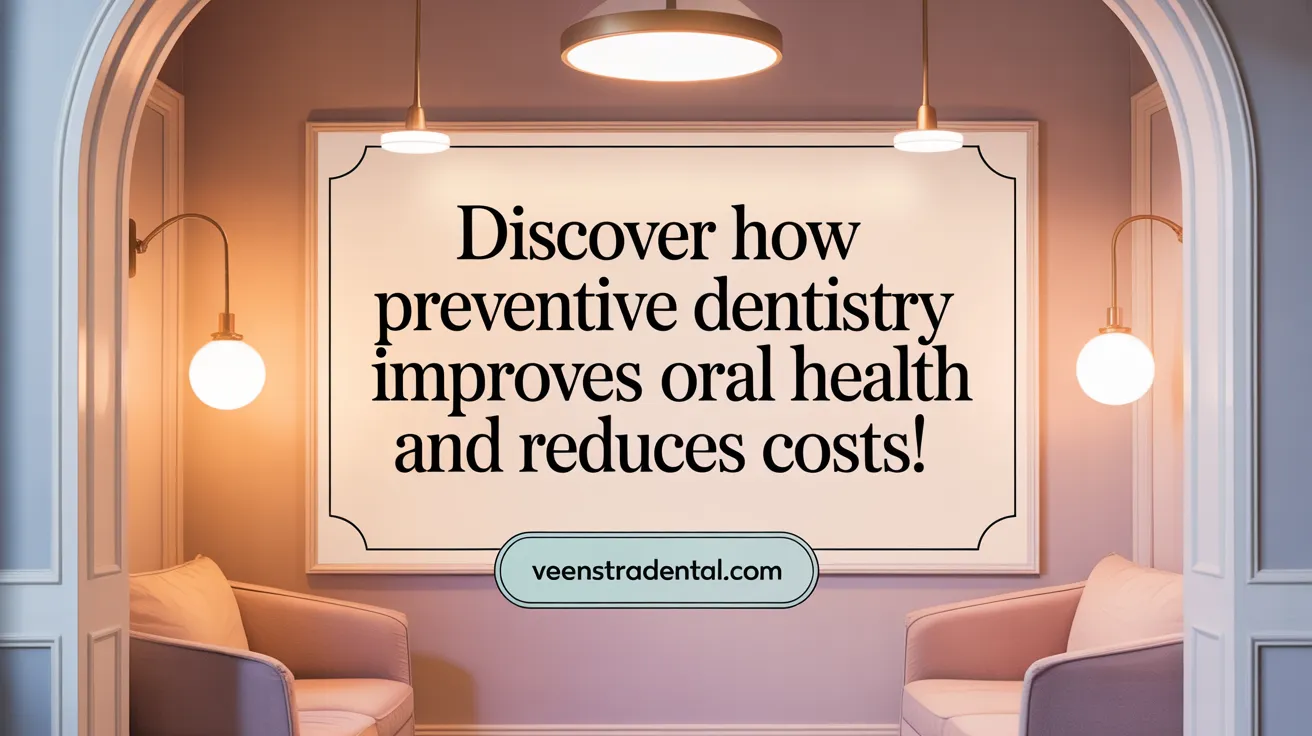Understanding Preventive Dental Care and Its Importance
Preventive dental care is the cornerstone of maintaining good oral health and reducing the burden of dental diseases such as cavities and tooth loss. Despite advances in dental treatments, many Americans continue to suffer from untreated dental caries, highlighting the need for regular dental exams, routine cleanings, and effective preventive strategies. This article explores the latest statistics, research findings, and best practices in cavity prevention and routine dental care, emphasizing their role in safeguarding oral health and improving quality of life across all age groups.
Prevalence of Dental Caries and Tooth Loss Across Age Groups
What statistics and data are available on cavity prevention and routine dental cleanings?
Dental health challenges are common across all age groups in the United States. As of recent data, 46.0% of children aged 2-19 had untreated or restored dental cavities in at least one primary or permanent tooth between 2017 and March 2020. This indicates that nearly half of young children experience dental decay, which can affect their overall health and quality of life.
Among adults, dental problems continue to be prevalent. About 13.2% of adults aged 65 and older experience complete tooth loss, highlighting how oral health issues can worsen with age. For middle-aged adults, approximately 25.9% of those aged 20-44 and 25.3% of adults aged 45-64 have untreated dental caries. These figures reveal that dental decay remains a significant concern across different adult populations.
Routine dental cleanings and check-ups play a crucial role in preventing disease progression. As of 2023, around 65.5% of adults aged 18 and older had a dental exam or cleaning within the past year. For children, the rate is even higher; 86.9% of children aged 2-17 visited a dentist in 2019, emphasizing the importance of early intervention.
Preventive measures like fluoride exposure, sealants, and regular professional care significantly reduce the burden of oral diseases. Dental sealants can prevent 80% of cavities in molars, and fluoride varnish reduces cavities in children by about 33%. Despite these effective methods, only half of Americans are following the recommended twice-a-year dental visits. Improving access to and utilization of preventive services remains essential.
Analyzing the broader landscape, most oral diseases—like cavities, periodontal disease, and oral cancers—are largely preventable and can be caught early through routine care. Enhanced public health efforts and education about good oral hygiene, including brushing twice daily with fluoride toothpaste and reducing sugar intake, are vital. Evidence shows that consistent preventive care not only improves individual oral health but also reduces healthcare costs by decreasing the need for more complex treatments.
| Age Group | Untreated Caries (%) | Complete Tooth Loss (%) | Dental Visit or Cleaning Rate (%) |
|---|---|---|---|
| 2-19 | 46.0% | — | 86.9% in 2019 |
| 20-44 | — | — | — |
| 45-64 | — | — | — |
| 65+ | 20.2% | 13.2% | — |
Persistent disparities exist, especially among socioeconomically vulnerable populations, who suffer higher rates of untreated decay and have less access to preventive services. Addressing these gaps can improve the overall oral health landscape across the country.
Access and Utilization of Routine Dental Cleanings and Exams

What statistics and data are available on cavity prevention and routine dental cleanings?
Recent data highlight significant gaps in the utilization of preventive dental services in the U.S. As of 2023, approximately 65.5% of adults aged 18 and older reported having a dental exam or cleaning in the past year. Among children, 86.9% had a dental visit in 2019, reflecting greater engagement in childhood preventive care.
Despite these figures, only about half of Americans meet the recommended guideline of visiting the dentist twice a year. This underutilization correlates with higher rates of untreated dental issues, such as cavities, which affect over 90% of adults at some point in their lives.
A concerning trend is the decline in routine dental attendance with age. Data show that attendance drops from about 82% at age 15 to just 28% by age 32. Routine visits are vital because they are linked to fewer teeth lost due to decay, lower experience of dental caries, and overall better oral health.
Barriers such as the uneven distribution of dental professionals and facilities, high out-of-pocket costs, and limited access especially among underserved communities significantly impede consistent preventive care. Addressing these barriers is vital for improving dental health outcomes nationwide.
Effectiveness of Preventive Measures in Reducing Cavities

How effective are preventive measures, such as routine dental cleanings, against cavities?
Preventive dental care plays a crucial role in reducing the risk of cavities and maintaining overall oral health. Routine dental cleanings, also known as prophylaxis, effectively remove plaque and tartar that regular brushing cannot fully eliminate. This reduction of bacteria and plaque buildup lowers the likelihood of developing new cavities.
Several studies have shown that consistent professional cleanings combined with diligent home oral hygiene significantly decrease cavity occurrence. In fact, individuals who maintained routine dental visits throughout their lives have been found to have fewer teeth missing due to decay and lower levels of caries.
In addition to professional cleanings, fluoride-based interventions are highly effective. Using fluoride toothpaste twice daily is recommended because fluoride helps reverse early decay and rebuild weakened enamel. Fluoride varnish treatments, applied periodically by dental professionals, have been shown to reduce cavities in children by about 33%.
Dental sealants are another preventive tool, particularly for children. Sealants are protective coatings applied to the chewing surfaces of molars that can prevent up to 80% of cavities. Children with sealants tend to experience significantly fewer cavities; however, many at-risk children do not receive sealants on their molars, which represents a missed opportunity for prevention.
When combined, these preventive measures—professional cleanings, fluoride treatments, and sealants—can lead to a 40-60% reduction in cavity development across populations. Such strategies are cost-effective and are essential components of a comprehensive approach to pediatric and adult oral health, reducing the need for costly treatments later on.
Overall, evidence indicates that routine dental care, supplemented by fluoride use and sealants, substantially lowers the incidence of cavities and contributes to better long-term oral health outcomes.
Evidence-Based Practices and Technological Advances in Cavity Prevention

What are the current research findings, trends, and evidence-based practices in cavity prevention and routine dental cleanings?
Recent research confirms that regular preventive measures significantly reduce the occurrence of dental caries and related conditions. Routine dental exams and cleanings remain foundational, with 65.5% of adults and 86.9% of children visiting the dentist annually in 2023 and 2019, respectively. These visits enable early detection and management of oral health issues.
Preventive treatments such as fluoride application and dental sealants are highly effective. Fluoride varnish, for instance, decreases cavities in children by about 33%, while sealants prevent approximately 80% of cavities on molars. Despite their proven benefits, only around half of children and at-risk populations receive these protective treatments, highlighting areas for improvement.
Best practices emphasize combining professional care with home oral hygiene. Brushing twice daily with fluoride toothpaste for at least two minutes is strongly supported by scientific evidence to reduce caries and gingivitis. Flossing or interdental cleaning is also associated with lower risk of periodontal disease.
Advances in diagnostic technology support personalized treatment plans. Digital X-rays and intraoral cameras facilitate early detection with minimal invasiveness. These tools help dental professionals identify early decay, often before symptoms emerge, allowing for targeted interventions that prevent disease progression.
Enhanced understanding of risk factors, such as diet high in sugars, tobacco use, and poor oral hygiene, guides tailored preventive strategies. Efforts include promoting a balanced diet low in free sugars and water as the main beverage, along with individualized recall schedules based on specific patient risk.
In summary, the integration of evidence-based clinical practices with emerging technology fosters more effective, personalized, and accessible cavity prevention, ultimately reducing the burden of oral disease and health disparities.
The Importance of Routine Dental Cleanings and Preventive Care

How preventive care maintains oral health
Preventive dental care plays a vital role in maintaining healthy teeth and gums throughout life. Routine visits to the dentist allow for professional cleaning to remove plaque and tartar buildup that regular brushing and flossing might miss. These activities help prevent common dental issues such as cavities and periodontal diseases, which are largely preventable if detected early.
Role of cleanings in early detection and treatment
During regular dental check-ups, professionals can identify early signs of decay, gum problems, or even oral cancers. Early detection can lead to simpler, less invasive treatments and prevent more serious health complications. Consistent care also encourages better oral hygiene habits, helping to sustain oral health and reduce the frequency of emergency dental visits.
Significance of fluoride and dietary habits
Fluoride plays a crucial role in strengthening tooth enamel, making it more resistant to decay. Using fluoride toothpaste twice daily, combined with professional fluoride treatments when advised, significantly reduces cavity risk. Additionally, maintaining a diet low in free sugars and high in fruits and vegetables can dramatically decrease the chances of developing dental caries. Water fluoridation further supports this effort by providing widespread fluoride exposure, reducing cavities by about 25%. Adopting these preventive practices is essential for long-term oral health and overall well-being.
Benefits and Impact of Preventive Dental Care on Oral Health Outcomes

What are the benefits and impacts of preventive dental care on oral health outcomes?
Preventive dental care plays a crucial role in maintaining good oral health by reducing the occurrence of common conditions such as cavities, gum disease, and tooth loss. Regular check-ups, cleanings, fluoride treatments, and sealants help in early detection and treatment, making dental issues easier and less expensive to manage.
Research shows that consistent preventive efforts lead to fewer cavities and less tooth loss over time. For example, children who receive dental sealants are protected against 80% of cavities, and fluoride varnish treatments can reduce cavities in children by 33%. In adults, routine dental visits are associated with fewer missing teeth and lower caries experience.
Beyond individual benefits, preventive dental care improves overall health by reducing systemic health risks linked to poor oral health. Conditions such as periodontal disease have been connected to diabetes, cardiovascular disease, and other systemic issues. Maintaining good oral hygiene and regular dental visits help lower these health risks.
Cost savings are another vital aspect. Preventive services, such as sealants and fluoride treatments, are cost-effective, often saving families and healthcare systems significant money by reducing the need for more complex, restorative procedures. For example, each additional year of preventive care can lead to approximately $188 in savings compared to no prevention.
Equity in oral health outcomes is also supported through prevention. Underserved populations, who often face barriers to dental care, benefit from programs like community water fluoridation and school-based sealant initiatives. These efforts help close the gap in oral health disparities.
In summary, preventive dental care not only reduces the burden of oral diseases but also promotes systemic health, saves costs, and supports health equity. Encouraging regular dental visits and healthy habits fundamentally enhances quality of life and holds significant public health benefits.
General Recommendations and Guidelines for Routine Dental Cleanings and Cavity Prevention
What general recommendations and health guidelines exist regarding routine dental cleanings and cavity prevention?
Routine dental cleanings are typically advised every six months, but this interval can be tailored to individual risk factors. Patients with higher susceptibility to cavities or periodontal disease may require more frequent visits, while others with good oral health might need less frequent care.
Daily oral hygiene practices are essential to prevent dental issues. Brushing twice a day with fluoride-containing toothpaste (1000 to 1500 ppm) for at least two minutes effectively reduces plaque and cavity risk. Flossing or using interdental brushes daily helps remove food debris and plaque from between teeth, lowering the chances of periodontal disease.
In addition to brushing and flossing, mouthwash containing fluoride can provide extra protection against cavities, especially for those at higher risk. Regular dental evaluations, tailored to individual needs, promote early detection and management of oral health issues.
Diet plays a pivotal role in maintaining dental health. Reducing intake of free sugars—found in sugary snacks, drinks, and processed foods—helps prevent cavities. A balanced diet rich in fruits, vegetables, and drinking water as the main beverage supports healthy teeth and gums. Avoiding tobacco and moderating alcohol consumption further safeguards oral health.
Lifestyle modifications, such as quitting smoking, limiting alcohol, and managing dry mouth with appropriate therapies, contribute to a comprehensive approach to cavity prevention. Collectively, these practices help maintain good oral hygiene, reduce plaque accumulation, and prevent the development of caries and periodontal diseases.
Following these guidelines can lead to fewer dental problems, lower overall health costs, and improved quality of life by preserving natural teeth and preventing severe oral conditions.
Economic and Health System Impact of Preventive Dental Care
Cost-effectiveness of preventive practices
Prevention strategies, such as fluoride use, dental sealants, and regular check-ups, are highly cost-effective. For example, sealants prevent 80% of cavities in children, reducing the need for costly restorative treatments later. Studies estimate that every dollar spent on preventive care can save between $8 and $50 by avoiding expensive procedures like fillings, root canals, and extractions.
Impact on emergency dental visits and surgeries
Regular preventive care significantly reduces emergency dental visits and the need for surgical procedures. Individuals who attend routine check-ups are less likely to experience severe decay or infections that require urgent care. Data shows that those who forego preventive visits are eight times more likely to visit the emergency room for non-traumatic dental conditions and seven times more likely to need oral surgery.
Relation to opioid use and overall healthcare savings
Preventive dental care also correlates with lower opioid prescriptions for dental pain. People who receive regular care are less likely to require pain management medications, helping combat the opioid epidemic. Additionally, comprehensive prevention reduces long-term healthcare costs by decreasing the frequency of costly treatments and hospital visits.
Summary Table:
| Aspect | Effect | Additional Details |
|---|---|---|
| Cost savings | Up to 50 dollars per dollar spent | Preventive care lowers long-term dental costs |
| ER visits | 8 times higher without prevention | Lack of routine care leads to emergencies |
| Surgeries | 7 times higher in non-attenders | Fewer procedures with regular check-ups |
| Opioid prescriptions | Lower with preventive care | Reduces reliance on pain medications |
Promoting access to routine dental visits and preventive practices can lead to substantial health and economic benefits, easing burdens on healthcare systems and improving patient outcomes.
Embracing Preventive Dental Care for Lifelong Oral Health
The statistics and research underscore the vital role of preventive dental care and routine cleanings in maintaining oral health and reducing the prevalence of cavities and tooth loss. Evidence-based practices like fluoride toothpaste use, sealants, and routine professional cleanings deliver proven benefits and cost savings, while early intervention prevents more severe dental issues. Despite challenges in access and utilization, increasing preventive care engagement offers profound oral health and systemic advantages across populations. By adopting recommended oral hygiene habits, seeking regular dental care, and fostering equitable access, individuals and communities can safeguard their smiles and overall health for a lifetime.
References
- FastStats - Oral and Dental Health
- Oral health
- Long-term Dental Visiting Patterns and Adult Oral Health
- 31 Dental Care Statistics and Facts ( 2025)
- Home Oral Care
- Oral Health Care Measures
- The Value of Preventive Oral Health Care | College of Dentistry
- About Oral Health
- The impact of underutilization of preventive dental care by ...
